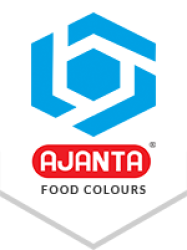_1749563089.jpg)
Multilayered food products like desserts, candies, jellies, filled chocolates, and frozen treats rely on vibrant and appealing colours that make them attractive to consumers. However, one of the most common problems that manufacturers often face is colour migration. Colour migration happens when one layer seeps or bleeds into another. This compromises visual appeal and may affect product quality perception. Colour migration even changes the taste of the product and raises questions about the product’s quality.
Preventing this type of migration is very important because it helps the manufacturer to maintain the aesthetic and brand value of their products. This article will look at how you can effectively control and avoid colour migration.
What Is Colour Migration in Food?
Colour migration refers to the unwanted transfer of colour from one layer to another layer in food products. It happens for various reasons, such as a product containing moisture and fat or being stored at different temperatures. This diffuses the particles of pigments and dyes in another layer of the product.
For Example, in a multilayered pudding, the red coloured layer is diffused into the yellow coloured layer, which makes the pudding look ugly instead of a clear colour separation.
Top Causes of Colour Migration
High moisture content: When the product contains moisture, the colour of the product may dissolve between layers.
Incorrect pH balance: Colours are pH sensitive and when the product undergoes various conditions it starts dissolving in another layer.
Improper layer setting: If the layers of product are not set properly before adding the next one, the colour may be leach into another layer.
Temperature fluctuations: When the product faces temperature fluctuations like thawing, freezing, or heating, it can cause colours to be mobilized.
Low viscosity formulations: Products that have thin layers or batters can lead to easy colour flow in products.
How to Prevent Colour Migration in Layered Products
Manufacturers can make their products look professional by adopting the following techniques that include:
1. Choose the Right Type of Colour
Use Lake Colours for Stability: Unlike water-soluble dyes, lake colours are oil dispersible and are less likely to bleed. They do not dissolve easily even a moist environment.
Match Colour Type with Product Base: Lake colours are ideal for oily layered products like chocolates or creams, on the other hand, stable synthetic food colours are ideal for water-based layered products like jelly or syrup.
2. Control Moisture and Water Activity
Limiting the water activities in each layer of the product reduces the colour mobility.
Use gelling agents (e.g., agar, pectin, carrageenan) to bind water more effectively and reduce free water available for migration.
3. Adjust the pH for Colour Stability
Most synthetic colours have optimal pH ranges. For example:
Tartrazine (Yellow 5) is more stable in acidic conditions.
Brilliant Blue FCF maintains colour in neutral to alkaline conditions.
Always test your formula to ensure pH is compatible with the colour.
4. Pre-Set Layers Before Adding the Next
Ensure each layer is cool and solid before adding a new one. This reduces the chances of the lower layer bleeding into the upper layer.
You can use quick-setting formulations if the product time is a concern.
5. Test for Migration During Product Development
Always ensure that the product does not degrade under real-world conditions such as refrigeration, shipping, or long shelf life.
Monitor the product’s visual appeal and chemical changes over time to evaluate the migration risks.
6. Use Barrier Layers if Needed
In some complex products adding a neutral-coloured barrier layer like white cream or jelly between two vibrant layers can reduce migration and improve visual contrast.
Colour Selection Tips for Multilayered Products
Avoid using too much dye in a single layer it can dominate or overshadow the other layer, affecting the appearance of the product.
Considering using encapsulated colours (protected within a coating or shell) to control colour release and reduce unwanted spreading.
For processed or heat-processed items, select synthetic food colours that are especially prepared for those environments.
Quality Control and Regulatory Considerations
Follow regional food safety regulations during the usage of synthetic food colours in your products. Governmental bodies such as the U.S FDA (Food and Drug Administration), EFSA (the European Food Safety Authority), and FSSAI (Food Safety and Standards Authority of India) ensure regulation on products.
Always practice storing colours in a cool and dry environment to avoid degradation before use.
Ensure batch testing to monitor dye dispersion and concentration.
Final Thoughts
Colour migration poses significant challenges for manufacturers in preserving the integrity of multilayered food products. However, by selecting advanced synthetic food colours, optimizing formulations, and implementing rigorous quality control, manufacturers can achieve vibrant, shelf-stable results, ensuring each layer retains its distinct appearance.
Partnering with trusted manufacturers and suppliers like Ajanta Food Colours guarantees high-performance, migration-resistant dyes that deliver batch-to-batch consistency. Proactively controlling colour migration safeguards not only your product’s visual appeal but also your brand’s reputation for excellence.




